• The Phonetic Structure of Language

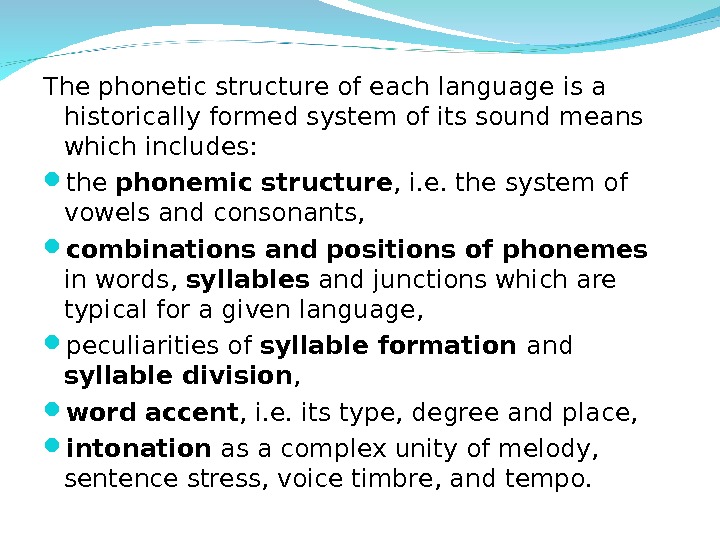
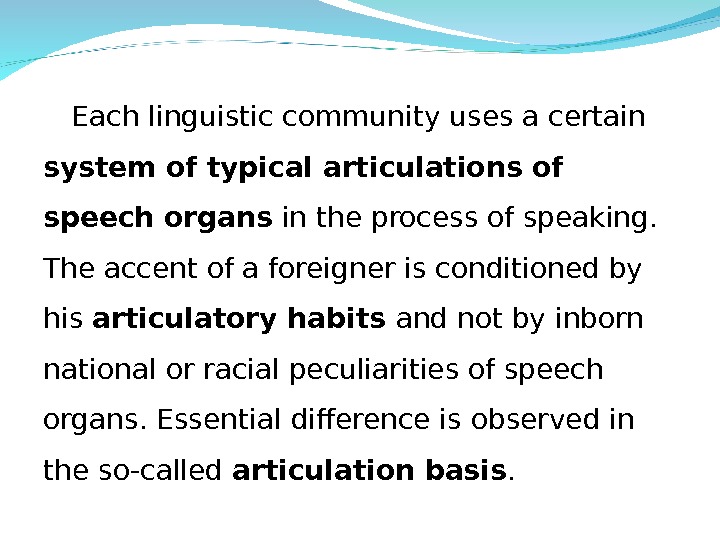
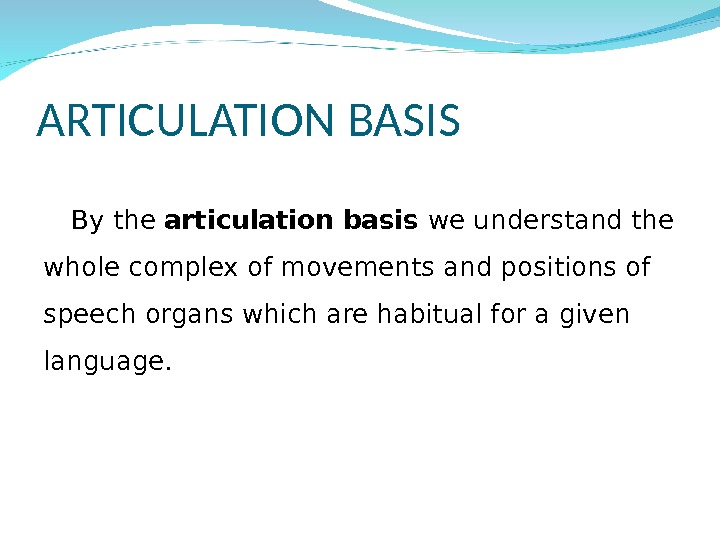
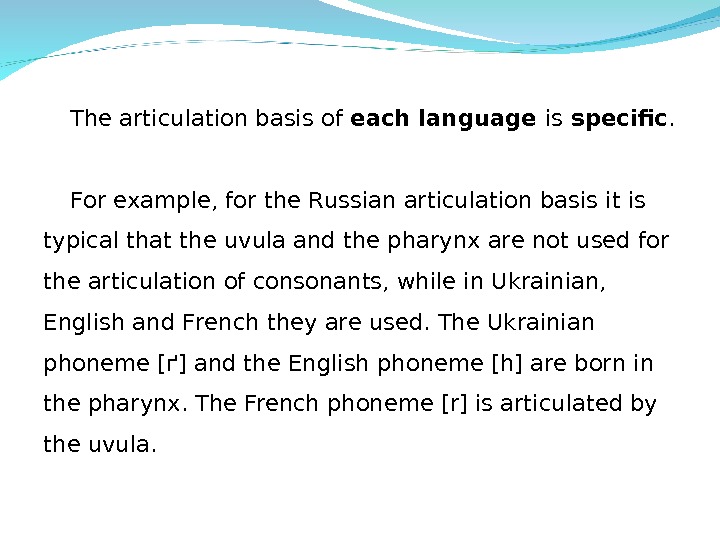
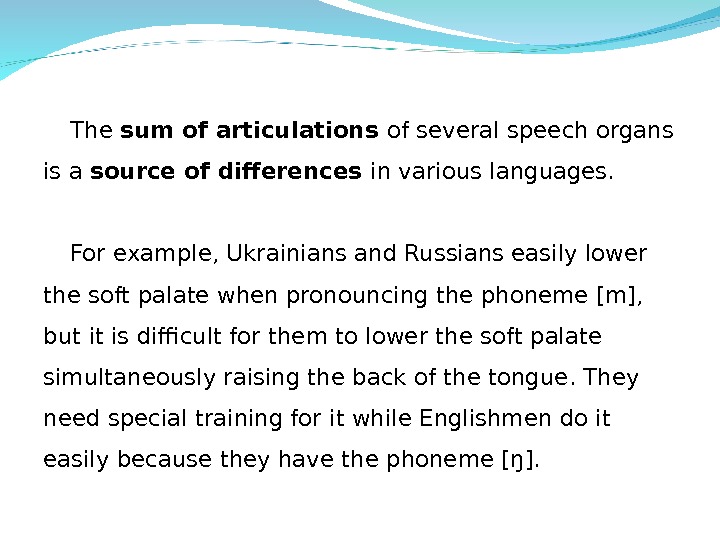

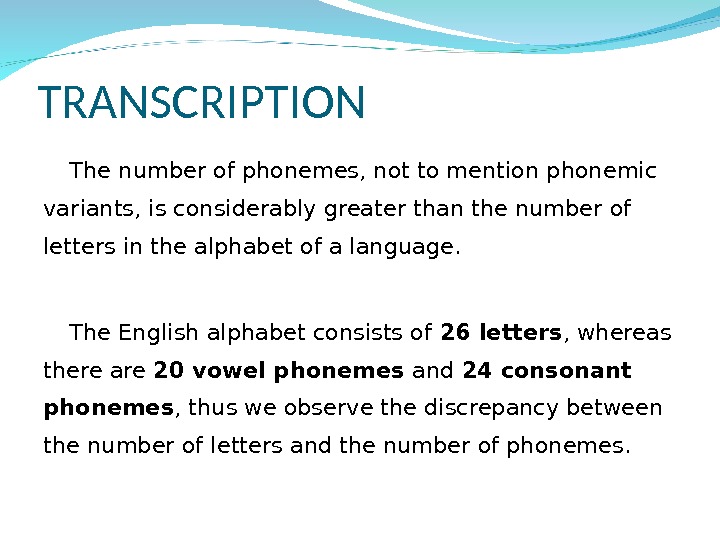

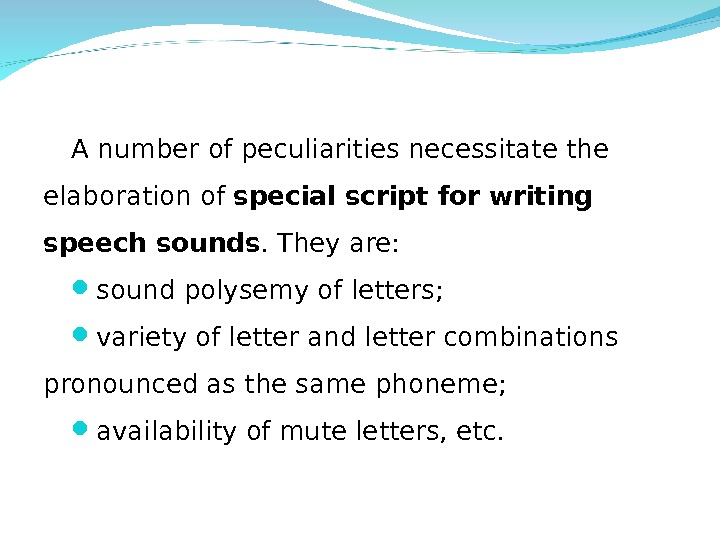

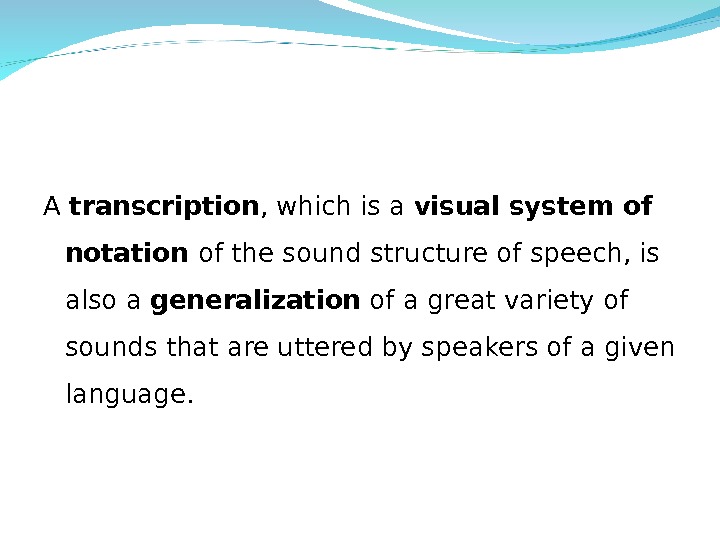

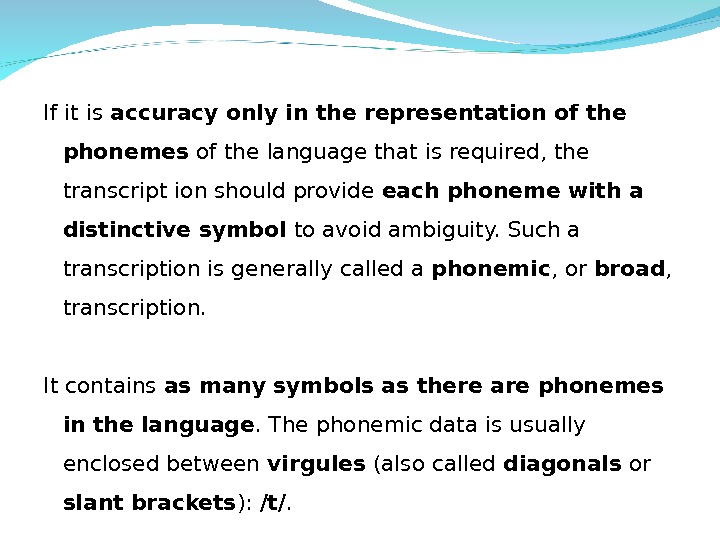
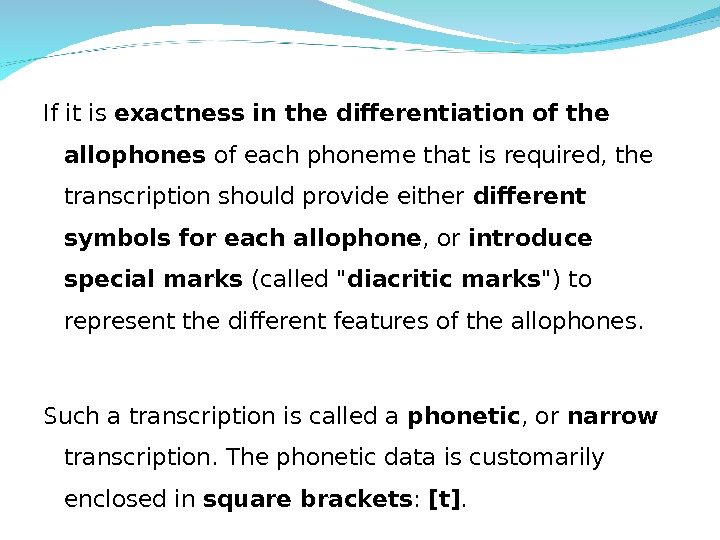
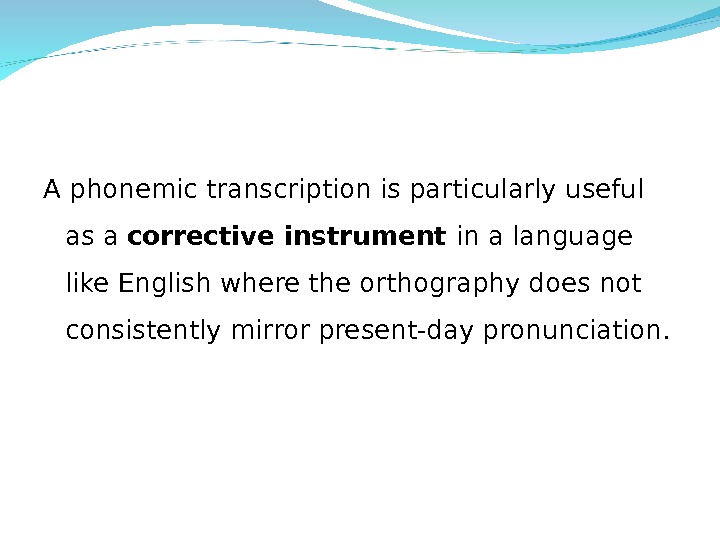
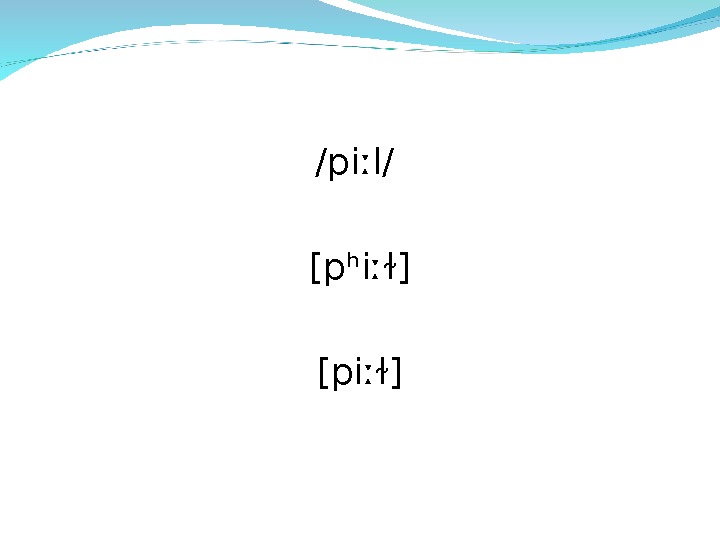
- Размер: 310.5 Кб
- Количество слайдов: 17
Описание презентации • The Phonetic Structure of Language по слайдам
 • The Phonetic Structure of Language • The Articulation Basis • The Types of Transcription
• The Phonetic Structure of Language • The Articulation Basis • The Types of Transcription
 The phonetic structure of each language is a historically formed system of its sound means which includes: the phonemic structure , i. e. the system of vowels and consonants, combinations and positions of phonemes in words, syllables and junctions which are typical for a given language, peculiarities of syllable formation and syllable division , word accent , i. e. its type, degree and place, intonation as a complex unity of melody, sentence stress, voice timbre, and tempo.
The phonetic structure of each language is a historically formed system of its sound means which includes: the phonemic structure , i. e. the system of vowels and consonants, combinations and positions of phonemes in words, syllables and junctions which are typical for a given language, peculiarities of syllable formation and syllable division , word accent , i. e. its type, degree and place, intonation as a complex unity of melody, sentence stress, voice timbre, and tempo.
 Each linguistic community uses a certain system of typical articulations of speech organs in the process of speaking. The accent of a foreigner is conditioned by his articulatory habits and not by inborn national or racial peculiarities of speech organs. Essential difference is observed in the so-called articulation basis.
Each linguistic community uses a certain system of typical articulations of speech organs in the process of speaking. The accent of a foreigner is conditioned by his articulatory habits and not by inborn national or racial peculiarities of speech organs. Essential difference is observed in the so-called articulation basis.
 By the articulation basis we understand the whole complex of movements and positions of speech organs which are habitual for a given language. ARTICULATION BASIS
By the articulation basis we understand the whole complex of movements and positions of speech organs which are habitual for a given language. ARTICULATION BASIS
 The articulation basis of each language is specific. For example, for the Russian articulation basis it is typical that the uvula and the pharynx are not used for the articulation of consonants, while in Ukrainian, English and French they are used. The Ukrainian phoneme [ґ] and the English phoneme [h] are born in the pharynx. The French phoneme [r] is articulated by the uvula.
The articulation basis of each language is specific. For example, for the Russian articulation basis it is typical that the uvula and the pharynx are not used for the articulation of consonants, while in Ukrainian, English and French they are used. The Ukrainian phoneme [ґ] and the English phoneme [h] are born in the pharynx. The French phoneme [r] is articulated by the uvula.
 The sum of articulations of several speech organs is a source of differences in various languages. For example, Ukrainians and Russians easily lower the soft palate when pronouncing the phoneme [m], but it is difficult for them to lower the soft palate simultaneously raising the back of the tongue. They need special training for it while Englishmen do it easily because they have the phoneme [ŋ].
The sum of articulations of several speech organs is a source of differences in various languages. For example, Ukrainians and Russians easily lower the soft palate when pronouncing the phoneme [m], but it is difficult for them to lower the soft palate simultaneously raising the back of the tongue. They need special training for it while Englishmen do it easily because they have the phoneme [ŋ].
 The articulation basis is closely connected with phonemic system of a language and depends upon it considerably. It is a perfect knowledge of the articulation basis of the studied language that insures successful mastering of the entire system of its articulation.
The articulation basis is closely connected with phonemic system of a language and depends upon it considerably. It is a perfect knowledge of the articulation basis of the studied language that insures successful mastering of the entire system of its articulation.
 TRANSCRIPTION The number of phonemes, not to mention phonemic variants, is considerably greater than the number of letters in the alphabet of a language. The English alphabet consists of 26 letters , whereas there are 20 vowel phonemes and 24 consonant phonemes , thus we observe the discrepancy between the number of letters and the number of phonemes.
TRANSCRIPTION The number of phonemes, not to mention phonemic variants, is considerably greater than the number of letters in the alphabet of a language. The English alphabet consists of 26 letters , whereas there are 20 vowel phonemes and 24 consonant phonemes , thus we observe the discrepancy between the number of letters and the number of phonemes.
 One letter represents several phonemes or, in other words, one letter may have several sound meanings. E. g. the letter ‘a’ (RP): table [ei], bag [æ], many [e], class [ɑː], wall [ɔː], want [ɔ], village [ɪ], care [ɛə], general [ə]. In English the historical principle of orthography prevails, i. e. such spelling of words which was formed in the earlier periods of the language development but now it does not correspond to the present-day sounding of the words.
One letter represents several phonemes or, in other words, one letter may have several sound meanings. E. g. the letter ‘a’ (RP): table [ei], bag [æ], many [e], class [ɑː], wall [ɔː], want [ɔ], village [ɪ], care [ɛə], general [ə]. In English the historical principle of orthography prevails, i. e. such spelling of words which was formed in the earlier periods of the language development but now it does not correspond to the present-day sounding of the words.
 A number of peculiarities necessitate the elaboration of special script for writing speech sounds. They are: sound polysemy of letters; variety of letter and letter combinations pronounced as the same phoneme; availability of mute letters, etc.
A number of peculiarities necessitate the elaboration of special script for writing speech sounds. They are: sound polysemy of letters; variety of letter and letter combinations pronounced as the same phoneme; availability of mute letters, etc.
 The modern phonetic transcription that is most widely used now is the International Phonetic Transcription devised by the International Phonetic Association in 1904. Among the creators of the phonetic script were such eminent phoneticians as Otto Jespersen, Henry Sweet, Laura Soames, Daniel Jones and others. Henry Sweet suggested the basic principle that there should be a separate symbol for each distinctive sound which being instead of another in the same language can change the meaning of a word.
The modern phonetic transcription that is most widely used now is the International Phonetic Transcription devised by the International Phonetic Association in 1904. Among the creators of the phonetic script were such eminent phoneticians as Otto Jespersen, Henry Sweet, Laura Soames, Daniel Jones and others. Henry Sweet suggested the basic principle that there should be a separate symbol for each distinctive sound which being instead of another in the same language can change the meaning of a word.
 A transcription , which is a visual system of notation of the sound structure of speech, is also a generalization of a great variety of sounds that are uttered by speakers of a given language.
A transcription , which is a visual system of notation of the sound structure of speech, is also a generalization of a great variety of sounds that are uttered by speakers of a given language.
 One can classify the sounds into phonemes disregarding the different degrees of aspiration, labialization, length, palatalization and other phonologically irrelevant features of the sounds. On the other hand, one can differentiate between all those features and classify them as well. Consequently, there may be different types of transcriptions depending upon the degree of exactness required.
One can classify the sounds into phonemes disregarding the different degrees of aspiration, labialization, length, palatalization and other phonologically irrelevant features of the sounds. On the other hand, one can differentiate between all those features and classify them as well. Consequently, there may be different types of transcriptions depending upon the degree of exactness required.
 If it is accuracy only in the representation of the phonemes of the language that is required, the transcript ion should provide each phoneme with a distinctive symbol to avoid ambiguity. Such a transcription is generally called a phonemic , or broad , transcription. It contains as many symbols as there are phonemes in the language. The phonemic data is usually enclosed between virgules (also called diagonals or slant brackets ): /t/.
If it is accuracy only in the representation of the phonemes of the language that is required, the transcript ion should provide each phoneme with a distinctive symbol to avoid ambiguity. Such a transcription is generally called a phonemic , or broad , transcription. It contains as many symbols as there are phonemes in the language. The phonemic data is usually enclosed between virgules (also called diagonals or slant brackets ): /t/.
 If it is exactness in the differentiation of the allophones of each phoneme that is required, the transcription should provide either different symbols for each allophone , or introduce special marks (called » diacritic marks «) to represent the different features of the allophones. Such a transcription is called a phonetic , or narrow transcription. The phonetic data is customarily enclosed in square brackets : [t].
If it is exactness in the differentiation of the allophones of each phoneme that is required, the transcription should provide either different symbols for each allophone , or introduce special marks (called » diacritic marks «) to represent the different features of the allophones. Such a transcription is called a phonetic , or narrow transcription. The phonetic data is customarily enclosed in square brackets : [t].
 A phonemic transcription is particularly useful as a corrective instrument in a language like English where the orthography does not consistently mirror present-day pronunciation.
A phonemic transcription is particularly useful as a corrective instrument in a language like English where the orthography does not consistently mirror present-day pronunciation.
![/piːl/ [pʰiːɫ] [piːɫ] /piːl/ [pʰiːɫ] [piːɫ]](/docs//english_phonetics_lecture_3_images/english_phonetics_lecture_3_16.jpg) /piːl/ [pʰiːɫ] [piːɫ]
/piːl/ [pʰiːɫ] [piːɫ]
